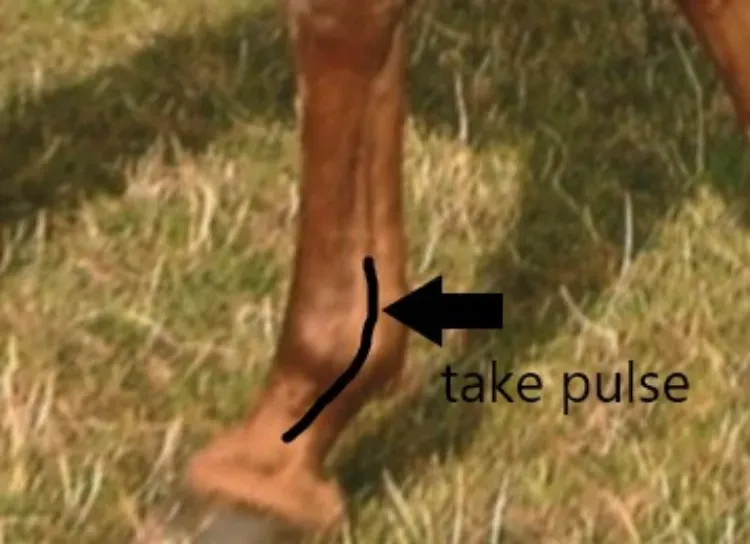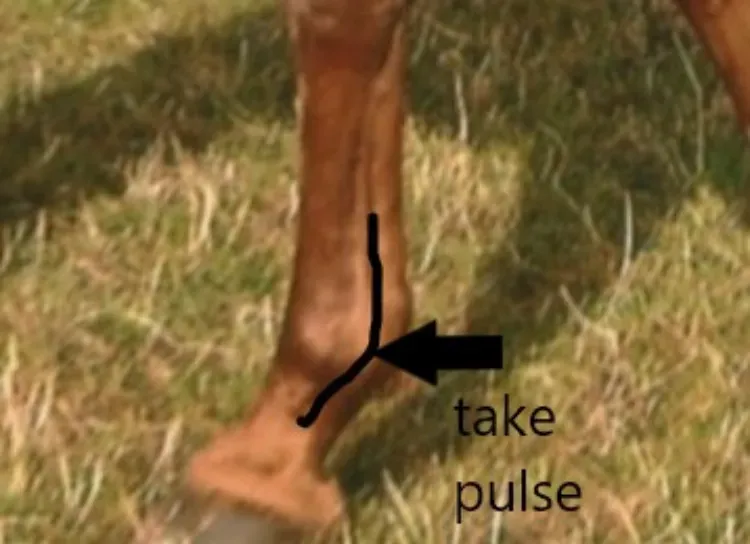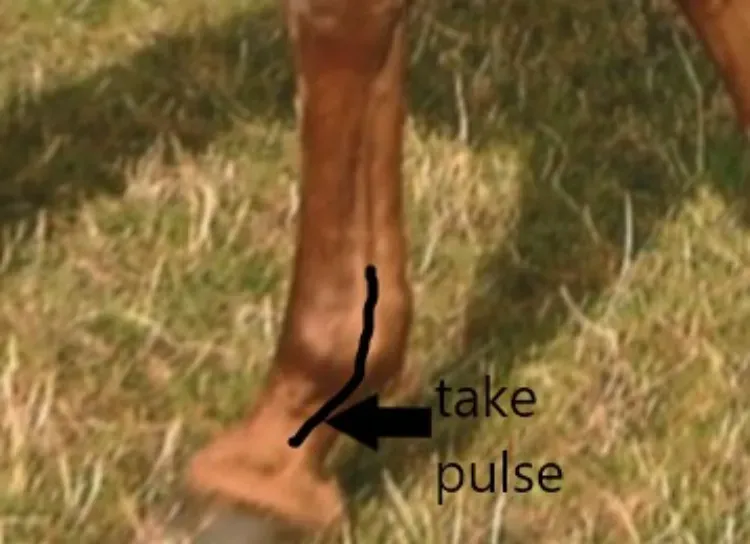
This article will consider locating and interpreting your horse’s digital pulse. We need to be detectives to find out if they have a problem. Horses can’t talk.
Taking the Digital Pulse is tricky
If you know where to take the digital pulse don’t press too hard and restrict the blood flow or use your thumb which has its own pulse. In both cases, a false reading will occur.
Three good places to find the Digital Pulse
The digital arteries run down both sides of the horse’s leg. The pulses from these arteries are easiest to detect where they are close to the skin.
In these diagrams the hand drawn black line is the location of the digital artery.
If you know where to take the digital pulse don’t press too hard and restrict the blood flow or use your thumb which has its own pulse. In both cases, a false reading will occur. Three good places to find the Digital Pulse The digital arteries run down both sides of the horse’s leg. The pulses from these arteries are easiest to detect where they are close to the skin. In these diagrams the hand drawn black line is the location of the digital artery.

1. Just above the Fetlock
There are two grooves running down each lower limb. Look at the groove to the back of the leg and just above the fetlock to locate the digital pulse. This groove is between the suspensory ligament and the flexor tendon.

2. On the Fetlock
This is the easiest place to take the pulse. The digital artery is close to the skin and crosses over the back and towards the side of the fetlock.

3. On the Pastern
On the side, under the pastern, the suspensory ligament travels diagonally along the pastern. This ligament is detected as a hard sinuous ridge. The digital artery runs along the grove just under this extensor branch of the suspensory ligament.
Understanding your Horse’s Digital Pulse
It is normally hard to locate the digital pulse and this is a good sign. If you can locate the resting pulse it should be between 30 and 40 beats a minute.
If you detect a Pulsating and Fast Beat when the horse is at rest there is a Problem
There will be a problem in the foot capsule or between there and where the pulse is taken if your horse’s digital pulse is pulsating and fast. However, it is important to know your horse’s normal resting pulse to make comparisons. Fit horses have the lowest resting pulses.
What Problems could there be
A fast and pulsating pulse could mean any of the following:
- Laminitis, which is associated with a strong digital pulse in more than one lower leg and typically both front legs
- Bruised sole, with a strong pulse in the connected lower leg
- Foot abscess, again with a strong pulse in the associated lower leg
- Another trauma with an elevated pulse in the lower leg above the affected foot.
If the pulse is only pounding on one side you have detected the side of the foot problem.
You have detected a Racing Pulse and you must now Act Swiftly
Depending on the problem different actions will be required. Seek veterinary and farrier advice and follow their recommendations.
Words of wisdom
“A stitch in time saves nine.”
- 1723 ENGLISH PROVERB

Article Suggestion
A Snapshot – Low Heels and Horse Soundness
